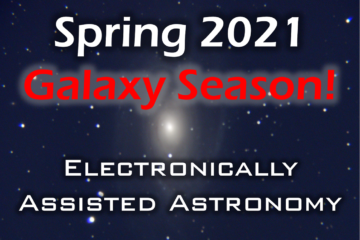You may have heard the term ‘Messier Marathon’ used by amateur astronomers. No, this is not an attempt to run 26.2 miles carrying your telescope. Rather, this is where you try to observing all 110 objects on Charles Messier’s, an 18th century astronomer, list of of fuzzy bright objects visible in the sky from the northern hemisphere that are not planets or comets.
This was my first Messier Marathon since observing 108 out of 110 back in 2011. The forecast was iffy with clouds foretasted for the start of the marathon at sunset as well as the end of the marathon just before dawn.
The cloud cover was predominately in the eastern sky at the start of the marathon & did not really impact our observing as the first objects were in the west and northern skies. As the skies grew darker, the clouds dissipated. We had several hours of mostly clear skies. However, the transparency was quite poor, galaxies were just not popping. It could have been some very thin upper clouds or just lots of particulates in the air like pollen. The light dome from the Raleigh/Cary area was particularly bad.
I set up in the middle of the field of RAC’s observing site at Jordan Lake. Unfortunately, I did not take into account the higher tree line of northern horizon which negated my seeing 5 of the first 6 Messier objects (M74, M33, M31, M32, M110). As for the 6th of first objects, I just could not detect the galaxy M77 in the bright twilight sky. By 8:40pm the skies were sufficiently dark, and I was able to get into a good cadence of observation, picking up 65 straight objects from my list. Around midnight some clouds began to roll in, but thanks to the larger aperture of my 11″ SCT, I was still able to detect objects, especially clusters and globs. By 1:30 a.m. I decided to take a little nap and see if the cloud cover would blow through. I started observing again at around 3 a.m., but the cloud cover had not really improved. I was able to make an additional 11 observations before the clouds became too thick around 3:40 a.m. and objects were no longer detectable. At 4 a.m. we decided to pack up and exited the site by 4:30 a.m.
On top of my 76 Messier Marathon observations, I was able to make an additional 12 observations towards my Binocular Messier program. I now only need 6 more to complete my 50 observations.
Despite the clouds and ending the marathon early, I had a great time and enjoyed some time under the stars.
Clear & Steady Skies!
-Mike


